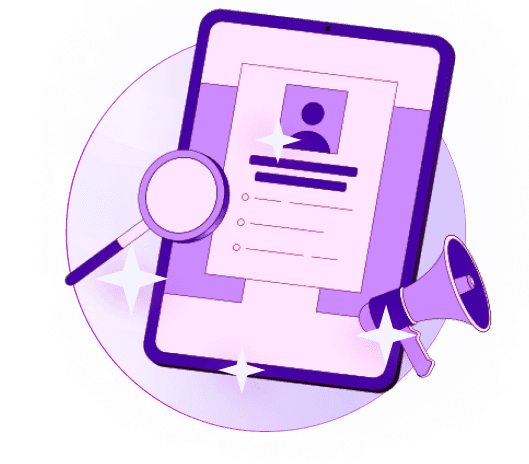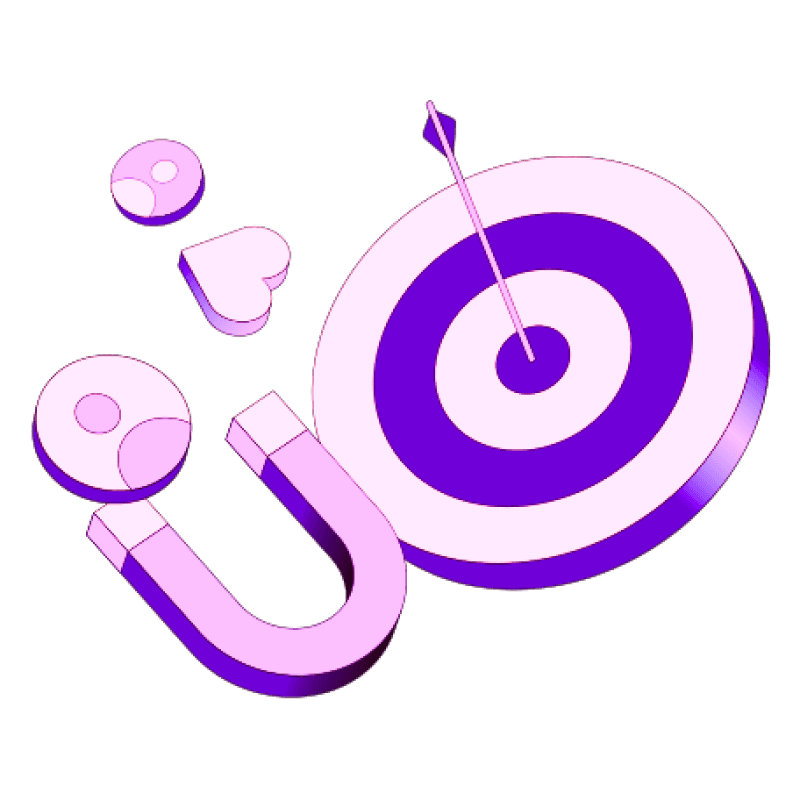Blogs
Articles

What Is a Sales Conversion Rate, and How Is it Measured?
Most people might think a 10% sales conversion rate is the standard for success. The reality? The average rate stands at just 2.5% in any discipline.
This piece breaks down the sales conversion rate concept, calculation methods, and ways to improve your numbers. Your business growth depends on understanding this vital metric - whether you need to fix low conversion rates or make your sales process better.
What is sales conversion?
Sales conversion is the process that turns interested prospects into paying customers. A sales conversion happens when a potential customer takes a specific action that matches your business goals.
Leads only show interest in your products or services. Real conversions are completed actions that help achieve your business goals. Sales conversion works so well because you can tailor it to your specific business model and goals. Your business might count these as conversions:
Completing a purchase transaction
Filling out a contact form
Subscribing to a newsletter
Downloading an app or software
Requesting a proposal or quote
What Is a Sales Conversion Rate?
Sales teams need concrete metrics to measure how well they perform. The sales conversion rate is a vital performance indicator that shows how many prospects become paying customers.
Sales conversion rate tells you what percentage of potential customers take action after hearing your sales pitch. The metric answers a simple question: "How many of our leads end up buying what we sell?"
Here's a simple formula to work this out:
Sales Conversion Rate = (Number of Sales ÷ Number of Leads) × 100
To name just one example, a team with 100 leads and 27 closed deals has a conversion rate of 27%. Another scenario: with 32 qualified leads and 20 sales, the rate jumps to 62.5%.
This number helps your business in several ways:
Performance indicator - Shows how well your sales and marketing teams turn leads into customers
Resource allocation guide - Makes it easier to decide where money should go
Revenue growth driver - Small upticks in conversion rates can boost your overall sales by a lot
Problem identifier - Spots exactly where leads drop out of your sales funnel
Goal-setting foundation - Sets realistic targets you can measure against
How to calculate and measure sales conversion rate?
Sales conversion rate calculations use a simple formula that gives an explanation of how well your sales perform. You need to measure this vital metric correctly and stay away from calculation mistakes.
Sales conversion rate formula
The basic formula to calculate sales conversion rate is:
Sales Conversion Rate = (Number of Sales ÷ Number of Leads) × 100
"Number of Sales" means the total closed deals (not the dollar amount), and "Number of Leads" represents prospects who asked about or connected with your company. The formula can change based on your specific goals to measure different stages of your sales funnel:
MQL to SQL Conversion = (Total MQLs that reached SQL status ÷ Total MQLs) × 100
SQL to Opportunity Conversion = (Total opportunities ÷ Total SQLs) × 100
Close Won Conversion = (Total closed won ÷ Total opportunities) × 100
Examples of sales conversion rate calculation
Real-world examples help understand these calculations better:
Example 1: Your sales conversion rate would be (27 ÷ 100) × 100 = 27% if you closed 27 deals from 100 leads
Example 2: The calculation becomes (20 ÷ 32) × 100 = 62.5% with 32 qualified leads resulting in 20 sales
Example 3: A typical e-commerce store that gets 100 daily visitors and makes 10 sales has a conversion rate of (10 ÷ 100) × 100 = 10%
Common mistakes in calculation
Sales teams often make these calculation errors:
Using unrelated figures - People often divide monthly sales by that month's leads incorrectly. The right way tracks leads from a specific period that turned into sales, divided by total leads from that same period.
Overlooking lead sources - Teams miss counting leads from all channels, especially rare ones like conference sponsorships or co-marketing campaigns.
Ignoring sales cycle length - Longer sales cycles need special attention. Report conversion rates only for leads older than your typical sales cycle length.
Missing the SQL to Opportunity stage - Companies focus on lead generation and closing rates but forget the significant middle funnel stage.
How to Measure Sales Conversion Rate Effectively?
Going beyond simple calculations, effective measurement of your sales conversion rate demands the right tools and processes. Your customers' behavior and sales process efficiency become clearer when you measure conversion rates properly.
Customer Relationship Management (CRM) software measures individual or segmented customer patterns effectively. Sales teams can score leads based on engagement levels and identify priority areas more easily with these systems. Sales dashboards give both sales and marketing teams visibility into immediate data through metric snapshots.
Modern analytics tools have revolutionized conversion rate tracking. Google Analytics provides free tracking capabilities that show which keywords and sources bring visitors to your website. Specialized tools like Kissmetrics analyze people's behaviors and show the exact path customers take through your website.
Successful measurement requires tracking conversion rates at multiple funnel stages:
Lead to MQL (Marketing Qualified Lead)
MQL to SQL (Sales Qualified Lead)
SQL to opportunity
Opportunity to closed-won deal
How to Improve and Increase Sales Conversion Rate?
Sales conversion rates can soar with targeted strategies that directly affect your bottom line. Research shows that proper optimization can increase monthly conversions by up to 250% and reduce cost per conversion by 82%.
Personalization is the life-blood of improvement. Your outreach should address specific customer's needs and challenges instead of sending generic messages. To name just one example, see how referencing a previous conversation and providing relevant resources shows prospects you truly understand their situation.
Making decisions based on data works better than relying on intuition. Sales analytics tools help you calculate where leads stand in your pipeline accurately. One company used this analytical approach to increase relevant blog leads by 72%.
Your sales funnel optimization at each stage creates compound benefits. Each stage needs a review of prospect contact timing, especially those stuck in the "Interest" phase who need follow-ups to move to "Consideration". A company found that there was too many fields in their sign-up forms—reducing them boosted new customer acquisition by 30%.
Strategies to improve your sales conversion rate
Smart businesses keep improving their methods to turn prospects into customers. The right strategies can take your sales conversion results from average to outstanding.
Customer trip optimization is the life-blood of refining interactions from initial click to final purchase. This creates smoother experiences that lead to better conversion rates. The process looks at every touchpoint to spot problems and chances to improve. A careful map of the customer trip helps reduce frustration and boost involvement, which leads to more sales.
Smart prioritization of touchpoints brings major benefits. Since not all customer interactions matter equally in converting sales, you should spot the ones that affect conversion and satisfaction most. Your analytics will show which touchpoints best move customers to the next stage of their buying trip.
Individual-specific experiences work as a powerful conversion tool, with more than 55% of consumers coming back to buy again. This goes beyond just using someone's name—content must match specific needs based on how people act and what they want.
Conclusion
Sales conversion rate optimization remains vital to grow your business sustainably. This piece explores conversion rates' simple definitions, calculation methods and improvement strategies. Sales conversion rates work as powerful indicators that show how well your sales process works and where prospects become customers or leave.
Your business needs careful attention to detail and a clear understanding of your sales cycle to calculate conversion rates correctly. Companies should avoid common mistakes like using wrong figures or missing certain lead sources. The right measurement tools—from CRM systems to specialized analytics platforms—give you the informed insights you need to make strategic decisions.
Personalization, customer experience optimization, and A/B testing can revolutionize your conversion performance. Sales teams that use these approaches regularly see better metrics and higher revenue. You should establish your baseline conversion rate first to measure progress against it.
Better conversion rates don't require complex solutions. Small, targeted changes often bring big results when you apply them systematically. Smart technology can boost your sales process - visit Persana.ai to find AI-powered solutions and detailed sales optimization tools that help implement these strategies.
FAQ
What is a good sales conversion rate?
Your industry, product type, and pricing model largely determine what makes a "good" sales conversion rate. Most industries see average conversion rates between 2% to 5%. Research from Ruler Analytics shows a 3.3% average across fourteen different industries.
E-commerce standards vary by a lot. Shopify stores average 1.4%, while rates above 3.2% put you among the top 20% of performers. Food and beverage businesses lead with 4.6%. Health and beauty follows at 3.3%. Electronics typically sees lower rates around 1.9%.
Businesses selling high-value products usually have lower conversion rates than those selling cheaper items. A company selling USD 10 t-shirts will convert better than one selling expensive electronics.
Is a 7% conversion rate good?
A 7% conversion rate stands out as excellent in most cases. Only about 10% of surveyed businesses achieve rates higher than 10%. This puts a 7% rate way above the norm.
Different industries tell different stories. Finance or real estate would celebrate 7% since they average 3% to 5%. E-commerce top performers might see this as modest, with some reaching 10% or higher.

Create Your Free Persana Account Today
Join 5000+ GTM leaders who are using Persana for their outbound needs.
How Persana increases your sales results
One of the most effective ways to ensure sales cycle consistency is by using AI-driven automation. A solution like Persana, and its AI SDR - Nia, helps you streamline significant parts of your sales process, including prospecting, outreach personalization, and follow-up.



